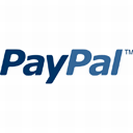How to create an online store
- Posted by Livecity In category E-commerce
You have decided to set up an online store, either as a business on its own or as part of your other activities. To achieve this, there are several steps you need to take. Luckily, actually building your website is covered by our Livecity e-commerce system, which allows you to quickly use terrific templates and simple processes to create and manage a stunning online store, including accepting payment by both card and PayPal. Here is a five-step guide to allow you to make the most of this resource:
Step 1: Undertake careful planning
There can be an understandable enthusiasm to get started in creating stunning designs and effective web content. Before you start though, you do need to carefully plan to make sure your online store is as productive for you as possible. To achieve this, it’s really important to take on the role of your potential customers. When they arrive, the impression and content needs to present the picture that they would want to see. Your style needs to be designed to help them quickly understand what they wish to know, and allow them to take buying action in as simple a way as possible.
Step 2: Create relevant and understandable content
When constantly working in your business, it’s very easy to forget that many of your customers simply don’t share your level of knowledge or understand the jargon of your business. To help customers undertake the action you want them to, your content should be pitched at their level of understanding, without ever talking down to them.
Step 3: Deliver effective arrival points
Those who visit your store will arrive from a range of different places. It may be through Google or another search engine, by using a link from social media sites such as Twitter or Facebook, as a result of a recommendation by a friend, through your own email marketing activities, or elsewhere. Some may reach your homepage, but more often they will probably be searching for a specific item. You should therefore create each individual landing page to let them know they have reached the right place, then provide the specific information they seek, and move them quickly on through the process.
Step 4: Provide selling descriptions
Arriving at their destination, your customers are not looking for just a cold and impersonal technical description of the product. Make sure that the language you use reflects that item and who is likely to buy it. This might range from fairly formal business-related products to much more chatty home or leisure stuff. Provide your visitor with confirmation that this product will do what they want it to, so talk about the benefits they can enjoy or the results to be gained. To this add the relevant product information that proves your case. Always remember that your copy is there to sell that item rather than simply describe it! Finish by moving them on to the next buying stage.
Step 5: Complete the buying process
Deliver as simple and hassle-free a buying experience as you can. Unless you have to, don’t insist that every buyer must “sign in” or “join up” – certainly give them this option, but an insistence will lose sales. Your Livecity e-commerce system templates will greatly help throughout this process.
On completion of their order, your work is not done. Ensure that your customers receives a friendly thank you and full details of how and when their purchase will be delivered.
Final thought
Once you are up-and-running, do remember that physical stores change their product lines and make fresh offers on a regular basis. Do this for your online store, keeping it lively and interesting.
What is "Authorize.Net" and how do I use it?
- Posted by Livecity In category E-commerce
If you're considering adding ecommerce to your website, you've probably come across Authorize.Net. If you're wondering what it is, and how you should use it on your business' site, we can help. In this article, we'll take you through what it does, and why you should use it on your website.
What Is Authorize.Net and what does it do
To process card payments, whether it's online, in a store, or over the phone, a business needs a service to communicate between card issuers and banks. This service authorizes the customer's payment, ensuring that you get the money for the product you are selling. Authorize.Net is an online payment gateway, allowing you to authorize, settle, and manage credit card transactions.
A payment gateway offers you and your customers a secure way to transfer the information of an online transaction. This means your customers can securely enter their payment details and they can be transferred to your bank with the appropriate security in place. As a gateway, Authorize.Net allows your customers to purchase online knowing that they are doing so safely, and it allows you to accept payments online without having the technical knowledge required to connect your website to your card service.
Authorize.Net is a well recognized payment gateway, and a name that many consumers know they can trust. Having Authorize.Net as your payment gateway means you can include a Verified Merchant seal on your site, too, which can further instill confidence in your customers.
Why and how to use it
When it comes to your ecommerce site, Authorize.Net is a great choice because it is easy to use. Along with being trusted by businesses and consumers, it is easy to set up and maintain. This is very important if you want to increase the sales you do via your website.
The Merchant Interface part of Authorize.Net allows you to manage your transactions, generate reports, and adjust your settings. This makes it easy to integrate with your existing accounting methods, as well as any order processing you need to do. As it is hosted online, you don't need to worry about installing software on your computer. It also means you can access it anywhere.
While some businesses find that an external service like PayPal is sufficient for their business, many feel that it isn't enough. A gateway like Authorize.Net allows you to accept payments directly through your website, as well as through other offline methods. This can give your company a very professional appearance, which will also help attract more customers.
Whatever you are selling, or however you are collecting payments, Authorize.Net can be adapted to your needs. This is part of why it is such a favorite among retailers, particularly those who want a solution that can cover both online and offline transactions.
Authorize.Net has been building a reputation for outstanding service and an excellent product since 1996, making them a very trusted payment gateway service. Between the ease of use and the trustworthiness of Authorize.Net, it is no wonder it is considered the top payment gateway.
The top 5 online payment alternatives to PayPal
- Posted by Livecity In category E-commerce
Most online consumers probably assume that PayPal is the best online payment system, and for good reason. PayPal is marketed as safe, convenient and affordable. Buying on PayPal is always free, but sellers incur a 2.9% per transaction fee. It is used by individuals for personal purchases and by companies. But is the electronic commerce company the best choice for business consumer’s websites? Make the determination for yourself.
1. Google Wallet
Formerly recognized as Google’s Checkout, Google Wallet is similar to PayPal. It offers fraud protection on purchases, and allows members to send invoices and to processes credit cards. Members will pay transaction fees, which are dependent upon the product. One of the main differences between Google Wallet and PayPal is the availability of rapid transfers between the site and your bank account. PayPal requires a 4-day waiting period before funds appear in your checking account.
Getting setup and managing an account is easy. The site is user friendly and the web tutorials will help get you started.
2. We Pay
We Pay is designed for businesses. One of the best features of We Pay is the ability for companies to allow consumers to checkout purchases on the business’ website. In other words, consumers are not re routed through a secondary terminal. Also, WePay users can immediately begin to accept payments and are usually paid in a very short amount of time; generally by the next day.
3. 2Checkout
2Checkout accepts credit cards, PayPal, and debit cards globally. Businesses have the opportunity to reach an international market, as the site accepts 26 currencies. Customers can select from 15 languages; proof that 2Checkout really is a global advantage. It is also free to sign up.
4. Authorize.Net
Authorize.Net has been the recipient of the Customer Excellence or ACE award for five consecutive years. With more than 400,000 merchants, the site claims to be the most widely used of its type on the internet. Authorize.Net provides service to small-medium sized businesses, allowing them to accept payments online, via mail, telephone order, by mobile phone and in brick and mortar stores. Merchant account fees vary, while credit card fees are based on the card company’s Qualified Rate.
5. Skrill
Formerly known as Moneybookers, Skrill is often considered more user friendly than PayPal. A real perk is that international merchants can transfer account balances to a prepaid debit card nearly instantaneously. Bank information is never revealed, and PayPal requires that customers reveal sensitive personal banking information. Skrill does not. Utilizing a pre-paid MasterCard system, cash can be withdrawn globally from anywhere, and consumers can access one of 1.9 million ATM’s.
It is free to sign up with Skrill, which is available for personal and business use.
Don’t assume that PayPal is the best alternative for your business. It may or it may not be, however, it is imperative that merchants research options that are available to them. Dependent upon the situation, and the fact that we are shrinking globally, an alternative might be considered.
What is PayPal and how do I use it?
- Posted by Livecity In category E-commerce
If you accept online payment for goods or services through your website, you should know about PayPal already. But if you're just starting out and you don't know whether to activate LiveCity's PayPal option, don't stay in the dark. There's a reason so many businesses depend on this website.
What is PayPal?
Quite simply, PayPal is a payment-processing business that handles online transactions and transfers. It offers a convenient, third-party way to accept digital payments without handling sensitive financial information yourself. Instead of worrying about encryption or hoping that customers will always trust the legitimacy of your online marketplace, you can depend on the reliability and credentials of this universally recognizable point-of-sale service.
How do I add PayPal to my LiveCity website?
Before you can begin accepting payments online, you must verify your information with PayPal and upgrade your account. Don't worry; this is completely free, and PayPal only charges minimal transaction fees for businesses. You can absorb the costs by incorporating fees into your prices, or you can opt for a premium account that belongs only to the business owner. If you're a private contractor or freelancer, this is the best option. However, if you need to address payments to the business itself for tax or other purposes, make sure you read up on the terms and conditions of each account type.
How does PayPal affect my business?
In addition to securely connecting your bank account with your customers' payments, PayPal increases the likelihood that people will make a payment at all. In fact, a year long Nielsen study discovered that PayPal integration increased customer counts by an average of 27 percent, and that customers spent twice as much money on websites that let PayPal handle the checkout.
This business boom probably has a lot to do with the website's widespread visibility, as well as its flexibility in accepting multiple forms of payment. For example, users can charge the amount to their credit card, remove it directly from their bank account, or even use digital currency to reimburse you. In return, you can immediately access this money and transfer it into your own bank account. PayPal provides legal protection for both you and your customers, ensuring that the whole exchange happens on very specific, secure, and well-documented terms.
Which businesses benefit the most from PayPal?
If you have an online retail business that ships products to domestic international customers, PayPal is a wise payment choice because it increases the likelihood and success rate of online transactions. However, online PayPal integration can help you do business in the real world too. For example, you can sell products on-the-go with PayPal's mobile app and a credit card reader, which makes it easy for artists to work from various galleries and shows. If you just have a personal blog but want to give readers a way to support your unsponsored efforts or contribute to a good cause, you can integrate optional PayPal donations.
The globalization of e-commerce in Business
- Posted by Livecity In category E-commerce
Most small and medium sized businesses (SMEs) used to be local businesses. Trading internationally required a significant effort, especially for those selling direct to customers. Shipping individual packages was complicated and expensive, and few found it worth investing in streamlining the process. Now, however, the internet has reshaped that world.
The changing face of business
This month saw the 20th anniversary of e-commerce, the driving force behind the revolution. It all began with the sale over the internet of a single album, Sting's Ten Summoner's Tales, and though initial growth was slow such trading has now become firmly established. Last year, e-commerce brought in $263bn in the US alone.
Key to this growth has been the ease with which e-commerce can be used to expand markets globally. This has drawn more and more SMEs into this way of doing business, which has in turn put pressure on other players in the commerce system to improve the services they offer.
On the money
One of the key difficulties with early e-commerce was exchanging funds, a problem that became more acute when globalization meant people wanted to trade across different currencies, and when businesses sought to reach market niches where there was little history of credit card use. Early systems were bespoke and generally revolved around bank transfers, though as late as 2005 there were still companies that insisted on receiving hard currency, exchanged at the buyer's expense and posted in an envelope. Obviously this was difficult to maintain - it made e-commerce a lot more difficult than traditional shopping - but the niche it created saw new forms of banking begin to emerge.
Launched in 1999, PayPal quickly moved ahead of the pack, setting the gold standard for online payment. Although it did require shoppers to have bank accounts and cards, debit cards would do, and banks were far more willing to issue these to customers on low or irregular wages. They were also more accessible to people in poorer countries. What really gave Paypal an advantage over its competitors, however, was the speed with which its developers anticipated how people wanted to shop. The introduction of the Paypal shopping basket system made it easy for them to buy what they wanted in any integrated online store.
Online shopping
The modern online store looks quite different from its early counterparts. Layout has been standardized so customers can quickly find things like the shopping basket and search box. There's an emphasis on pictures, which not only lets people see before they buy but means that language is less of a barrier in the shopping experience. Stores like this can take quite a bit of effort to maintain in the old fashioned way, but professional ecommerce systems, available at very reasonable prices, now enable a lot of the upkeep to be automated, keeping track of things like price changes and whether or not items are in stock. This means business owners can easily engage with the online marketplace and take advantage of improved delivery systems to ship their products all around the world.
How has e-commerce changed the global market
- Posted by Livecity In category E-commerce
The rise and rise of e-commerce has radically transformed the way the world does business at every imaginable level—from the smallest of small businesses taking its first hesitant step into the online marketplace to the cut and thrust of global competition, where the biggest online players vie to dominate the market.
The increasing importance of the global market is driven in part by the ubiquity of smartphones and other mobile devices as well as the ever-growing availability of Wi-Fi access, not only within the home, but also in public areas, such as cafes, shopping malls and bricks and mortar stores. These factors have come together to create an environment which facilitates online purchases at almost any time and in practically any location. The online businesses which have benefited most from this environment are, not surprisingly, those who have invested in an online presence which has been optimized for mobile customers. With providers such as Livecity offering simple to use website building tools with drag and drop interfaces that can be used to create both traditional and mobile-optimized sites, this option is increasingly available to even the smallest businesses.
As the online market continues to expand, evolve and mature, it looks set to continue to change the global market for many years into the future. While all this change has brought with it many new opportunities for businesses to reach out to new clients and customers as well as to partner with one another it has also uncovered new challenges which the business community will have to address. These include ensuring safe payments with innovative payment solutions such as that developed by PayPal, as well as creating attractive online stores and an integrated shopping experience for their customers.
So what is on the horizon for the global e-commerce? Today, retailers and other businesses of every type and size can glean indications of where the global market is headed by looking at the ways in which some of the big name players, such as Amazon, Facebook, eBay and Google are developing and the kinds of research and technology those companies are investing in. This is not to forget, of course, the importance of China's online marketplace, which, with heavy hitters such as Alibaba, Baidu and Tencent, looks increasingly set to take its place at the forefront of the global economy. These businesses, too, are important indicators of the ways in which the worldwide online market is developing.
There is much that smaller businesses can learn from the strategies currently being implemented by all these big players. It is telling, for example, that world class e-commerce strategies include considerable investment in groundbreaking payment technologies which are geared to counteract the risk of fraud. Security risks of all kinds continue to be a threat which online businesses of all sizes must be vigilant about because, while secure payment systems become ever more sophisticated, so do the methods of fraudsters and other criminals who would seek to undermine those systems. The big online businesses also continue the quest to enhance the customer's experience of shopping in their online store by putting time and money into the development of next generation search technologies.
5 things to do after finishing your e-commerce website
- Posted by Livecity In category E-commerce
E-commerce has officially arrived. If you're a business owner who recently made the decision to join the world of online commerce, you already know how important technology is in today's marketplace. From retail to restaurant takeout and everything in between, good website design can make all the difference for struggling start-ups and established companies alike. So after you've taken the time to reserve your URL, design a user-friendly layout, and give your products or services an online home, it's incredibly important to follow these five final steps.
1. View your website on multiple browsers and devices
If you only have one internet browser on your computer, download its competitors temporarily. Google Chrome, Internet Explorer, Safari, and Mozilla Firefox are the most common browsers, so it's almost a guarantee that you will receive traffic through all four browsers. Test your website yourself to make sure nothing looks jumbled or too enlarged on any of them. You should also access it from multiple devices, including external monitors with different dimensions. Borrow a friend's tablet or head to an electronics store if you don't have a variety of different mobile devices. You can usually test different products in-store, so pull up your website on Macs, PCs, laptops, tablets, and smartphones.
2. Verify and secure your point-of-sale method
If you've chosen to accept payments through PayPal, you don't have to worry as much about cyber-security issues that plague some virtual point-of-sale (POS) applications. However, you should still make sure your potential customers don't face any stumbling blocks during their transactions. Authenticate your PayPal account and make a trial purchase with your own personal credit card, just to make sure it goes through.
3. Establish a way to measure website metrics
If you add Google Analytics, you can track everything from conversion rate (percentage of visitors who actually make a purchase) to bounce rate (how long it takes for new visitors to leave your website, and how often it happens). Make sure you know exactly what you want to measure, and decide how to keep track of these important criteria. If product page views are important to you, double-check that every product page is collecting accurate data.
4. Make sure the check-out process is seamless
Go through every step of the POS process yourself, and ask family members and friends to do the same. Only ask for information that's absolutely essential for the purchase, but give customers the option of giving you more information too. You don't want this to be a tedious or complicated transaction, so make sure your forms follow a universal format, and don't overwhelm visitors with too many colors or questions. As always, include a call to action at the beginning and end of the process too. Give customers an actionable message, whether you want to show them how to track their shipment or you just want them to sign up for newsletter updates.
5. Update your social media accounts and share your URL with followers
If your business doesn't have a Facebook and Twitter account, now is the time to sign up for them. Upload your logo and images of your products or services, and introduce yourself to new followers in a friendly, concise, and engaging way. Then start the most important process of all: sharing your website with the public. Hype up the launch for your social media followers, and share the homepage URL after you've completed the first four steps on this list. As you update your website, continue to keep everyone informed with new links and announcements. You should also share your website's launch with everyone on your contacts list. E-mail previous customers and current clients, colleagues, and business partners.
How good online retail store design increases sales
- Posted by Livecity In category E-commerce
Creating a successful online store is a tricky business. A great many people spend time and money building their store and then feel a little crushed when the orders don't come rolling in. LiveCity can help by providing you with an effective template for an online store that is compatible with PayPal and other e-commerce services, but how you fill that in is still of vital importance.
Here are a few tips to help you to design the perfect online store for your business:
1) Make sure that your products are the center of attention - This is a cardinal rule of designing any e-commerce site. The design of your site is vitally important, but don't fall into the trap of attracting attention away from your products with eye catching fixtures and fittings around the page. Everything should be focused on selling your goods and an unfussy design where the products take center stage is generally the way to achieve this.
2) Use your branding - If you don't have a logo for your company then you should get one. Your logo should be prominent on your store and its colors should be repeated throughout the design. Ultimately, the aim is to get customers to instantly associate whichever class of goods or services that you sell with your brand. If you succeed in this aim, then rather than searching for spanners, or whatever you sell, they might instead search for your company.
3) Suggest alternative and related products - A great many shoppers start looking for goods without knowing exactly what would be best for whatever they have in mind. By suggesting related alternatives to each good on your site you can help them to find what they need rather than heading off to another site or deciding against making any purchase. Suggesting associated goods could also persuade them to buy something else that they hadn't even thought of before visiting your site.
4) Make sure your site is easy to navigate - If shoppers are to stay on your site and look for the items they want then you have to make it easy for them. There should be a clear menu with easily legible links to each category of product on the site. You should also make sure that the name of the current page is clearly visible so that visitors know where they are at any given time. All of these navigational items should be straightforward, uncluttered and clearly visible at all times.
5) Illustrate your products - If customers can't look at the goods you have for sale then they will be very unlikely to buy them. Pictures of each item showing it in an appropriate setting and in as attractive a way as possible will help to sell your products. These goods are ultimately why your visitors are coming to your store so it is important that pictures are sufficiently large and given due prominence on the page.
5 tips for planning an e-commerce website
- Posted by Livecity In category E-commerce
The world of e-commerce is even busier and more competitive than your local shopping mall. You have very little time to hook a customer once they have decided to pay you a visit. Therefore it’s vital that, when using the superb range of templates here at Livecity, you design a site and create an online store to deliver the results you require. Here are five key steps towards achieving this:
1. Understand exactly who you are talking to
Clearly defining your target market, both for the range of products, and for individual items, may take a little while – but it is absolutely vital to your success. Just like a doctor should know her patients, a lawyer his clients, then you need a clear picture in your mind of the kind of buyer, what they need to know to buy, and how they would wish to be spoken to.
2. Extensively market your e-commerce site
There is little value in working hard and creating a terrific site, full of great products, if nobody (or even not enough people) know about it. You aren’t a physical store that can rely on passing traffic, you need to get out there and grab them. This means advertising, email campaigns, being a constant presence on social media, creating blogs, offering articles to other websites and the like. Otherwise you may just be that shopkeeper drumming their fingers on the counter in an empty store!
3. Make it easy for potential customers to take action
Lengthy sign-up forms are off-putting, and many potential customers will simply leave and shop elsewhere. Only ask for any information you really need, and it’s often good if you can to allow folk to buy without the need to officially register. You are keen on the latter because you can build them into a followup program, but many people just want to buy and be gone. Yet they will also come back if the experience was as simple as they wanted it to be. Also in this area, offer as many different payment options as you can, such as credit or debit cards and PayPal, as this will increase the number of completed transactions.
4. Walk them through a simple process
As the customer spends time on your e-commerce site, it’s good to let them know how they are progressing. Or, to put it another way, how soon they’ll be done. Outlining a limited number of clear steps keeps them with you. Making it easy for them to backtrack if they suddenly realize they’ve made an error avoids them simply going away and leaving the process (and the sale) uncompleted.
5. Thank them politely when they are done
If you’ve ever been in a store where you ceased to exist the moment you paid, you’ll know what a let-down this can be. Have a friendly and helpful “transaction completed” message with a clear indication of what will happen next. Be sure to add a “continue shopping” link as well, as there’s no reason why they shouldn’t spend some more cash with you!
These five tips give you the chance to maximize the streams of revenue an effective Livecity e-commerce website can provide for your business.
Why use PayPal for your e-commerce website?
- Posted by Livecity In category E-commerce
Adding PayPal to your e-commerce website is the easiest way to collect payments from your customers – simply add the relevant PayPal buttons to your livesite and your website becomes an online store.
Credit card companies and banks require you to have a merchant license before allowing you to process online payments. For this, you need a business bank account and must provide a lot of information about your business before you can begin selling.
With PayPal, a merchant license is not necessary, saving you time and resources so you can get on with selling straight away.
It’s secure
Setting up PayPal may be simple, but that doesn’t mean it is less secure. Configuring your livesite online store to accept secure payments and credit card payments is straightforward – you only need to give PayPal your country, name, address, phone number and email address, and accept the PayPal user agreement.
Moreover, encrypting data sent to and from your online store used to involve a lengthy process of applying for an SSL (Secure Sockets Layer) license, and then building and configuring your e-commerce site to suit.
With PayPal, all you need to do is click Yes to encrypting your PayPal button code, and when you add the button to your e-commerce site, your customers can be assured their personal information is safely hidden as they shop online with you.
There are no set up fees
Setting up an online store normally requires some kind of outlay, such as paying for additional software or customizing your website code to integrate payments. Moreover, credit card companies often charge a monthly fee just to have their payment button on your website, whether or not you actually make a sale during that time.
PayPal doesn’t charge anything to add the service to your site, making it ideal for new businesses, as well as established online stores anticipating a varying number of sales each month. You only pay a small percentage to PayPal for every sale you make, which drops as your volume of sales increases. If you don’t sell anything, you don’t pay anything.
You can choose your payment preferences
PayPal has a number of different payment options to suit your e-commerce needs when integrating PayPal with your livesite online store.
Express Checkout has no monthly fee and gives your customers the options of paying with their PayPal account or with a credit or debit card on the PayPal website.
The Payments Advanced and Payments Standard options also take your customers to the PayPal website to complete their transaction.
If you want to accept credit cards directly on your site, and allow recurring payments such as subscriptions, you can pay a monthly fee to do so through the Payments Pro option.
Payflow Pro also supports recurring payments, but with lower transaction fees in return for a slightly higher monthly fee, making it ideal for sites with a lot of monthly sales.
What is eCommerce and why does my business need it?
- Posted by Livecity In category E-commerce
eCommerce is the common term for any kind of commercial transaction that takes place purely through the internet. This transaction may be between a consumer and an online-only store, on the website of a big-box store chain, or even a business to business transaction. No matter what your business model is, you should take a closer look at eCommerce as a way to build your business.
What does eCommerce do?
eCommerce gives your customers the ability to buy from you without having any limitations imposed by time or distance. Think about that for a moment. A sale that you normally would not have made because the customer was unable to visit during business hours or lived too far away suddenly becomes not only possible, but likely. This shows why there has been such a rapid expansion of eCommerce over the last 10 years and why it shows no signs of slowing down. Businesses worldwide are racing to conquer the eCommerce landscape, but with virtually limitless potential for sales there is plenty of room for everybody.
What about B2B sales?
Conventional wisdom states that consumer sales and B2B sales are light-years apart, but in the case of eCommerce your B2B sales can benefit just as much from an online presence as any retail outlet. Since B2B sales is such a complex arena, with companies dealing with hundreds if not thousands of other customers and suppliers, eCommerce gives these businesses a competitive advantage when they are able to automate and simplify the sales and shipping process. It is often a faster and more affordable way to run a B2B sales company.
So does my business need eCommerce?
Setting up an online store can be difficult, especially if you are not an expert web designer. If you don't have an advanced knowledge of online sales you may be daunted by the prospect of moving a significant portion of your operation online. You may be worried that your online endeavor may fall well short of your expectations and put the success of your business in serious jeopardy. The truth of it is that if you choose not to take the plunge there are a hundred businesses waiting right behind you that will. There is no doubt that eCommerce is here to stay.
When implemented correctly, eCommerce:
- Connects you to a customer base you otherwise never would have access to
- Lower your costs and raise your margins on sales
- Create an automated flow of repeat business and perpetual ordering cycles
- Save you a great deal of money in loss prevention costs
- Increase your brand recognition and make your business a leader in your industry
If any of this sounds good to you, and it should, you should take the time to look into building an eCommerce platform for your business. It may not be as hard as you think it is, and it could have a huge positive impact on your business for years to come.
Enhance your business with e-commerce
- Posted by Livecity In category E-commerce
Your business has a lot of opportunities available thanks to the internet. Customers can find your location, learn about what you do, and even make purchases. If you're missing an e-commerce portion of your website, you are missing a huge opportunity to grow your business.
If you sell any goods or services, you can use an e-commerce solution on your website. Showing your customers what you sell is no longer enough. A great website will include an online store where customers can actually make a purchase quickly and easily without leaving the site.
Why include e-commerce?
The short answer to why you should include e-commerce in your business' online activities is this: because your competitors are. Think about it from the customer's point of view. They want the most streamlined process for making their purchase. They will naturally choose the business that offers them the easiest solution. If they're already on a website, allowing them to purchase your goods then and there will be the best choice for them.
Make it secure
One concern that many businesses and customers have is security for online shopping. Payment solutions such as PayPal offer a cost effective and extremely secure way to process purchases. If you already accept card payments in your store or over the phone, you can check with your bank about adding an online component. However, many customers will feel more comfortable with a recognizable brand like PayPal.
Another benefit of offering PayPal payment, whether as your only method or in addition to your own credit card processing, is that customers can have a streamlined checkout process. PayPal stores their card information, so they don't have to reenter everything on your site, making them more likely to complete their purchase with you.
Make it attractive
As web users, we've all been to websites with a poorly designed web store. Whether it's images that are too small, or the whole thing is difficult to navigate, it can leave you frustrated. An unattractive online store can cut down on the number of customers who actually stay and make a purchase.
Using a web solution that can make your e-commerce site easy to use for both you and your customers is a great way to enhance your business. As a business, you need to be able to easily add and remove items from your online store, and manage orders as they come in. For the customers, your site needs to be easy to navigate, attractive, and secure.
With more businesses getting online, you need to stay ahead of the curve, and this means offering online purchases. Even if your business is service based, you can offer online purchases of your time. Your online store can be whatever you and your customers need it to be.
Luckily, creating the perfect e-commerce solution for your business website is easier than ever. Get in touch with us today to find out how we can help you create a secure and user friendly e-commerce website for your business. You'll be glad you did!
5 useful tips to improve your e-commerce SEO
- Posted by Livecity In category E-commerce
E-commerce may be the complete reason for your business website, or simply a part of a range of activities you undertake or services you provide. Whichever, there are some specific points that can help make the most of the SEO you use. Here are five powerful tips:
Create unique meta tags
People seeking the product are not also likely to be seeking your business, unless you happen to be the manufacturer. Make sure your meta tags are therefore uniquely tailored to each specific product, ensuring that, when searching, your potential customers are brought right to the place they want to be. How often do you search for an item and find the link you click is to a home or general information page, leaving you to do the work and find where you want to be (or, just as likely, retrace your steps and go elsewhere)?
Keep your products close to your homepage
Further to the previous point, how often are you expected to start by choosing a category, and then you’ll find some sub-categories, followed by a multi-item menu or two? Eventually, if you are persistent enough, you might finally reach your destination. Remember, your homepage is also likely to be your highest SEO-ranked page, so keeping your products close is valuable.
Ditch those manufacturer’s descriptions
Well, perhaps not totally. When you read the descriptions provided by a manufacturer, it’s often clear that no person would talk in that way when describing the product. Yet, when searching, people are more likely to be in talk-mode. Also, your copy is not simply a description, it should be a sales tool as well. Think about the uses people will make of any product because that’s also likely to define their search terms.
Invite customer reviews and comments
This delivers unique content to your site, rather than simply the descriptions you have created. Those leaving their thoughts will often use words or phrases that you might not have thought of. Yet, if that’s one person’s view, then others might be using the same terms to search. It’s a terrific way to be more SEO friendly than you might have thought possible! Incidentally, the occasional negative review also makes your site seem more realistic, and gives you the chance to correct any misunderstandings, or clarify any areas of doubt.
Product tagging by customers
#whatagoodideathiswouldbe. The world of social media now sees people regularly tagging products with their own keywords or slang. Like the previous point, you are giving your site the opportunity to be found by a search by those terms people are currently using. You might not even fully understand some of the "speak", but as long as more potential customers do, it’s a no-brainer to welcome the idea.
When you use the terrific store templates here at Livecity to create your e-commerce website, and then as it develops and thrives, these five tips can help you gain that bit more traction when potential customers are searching for the products or packages you are offering.









